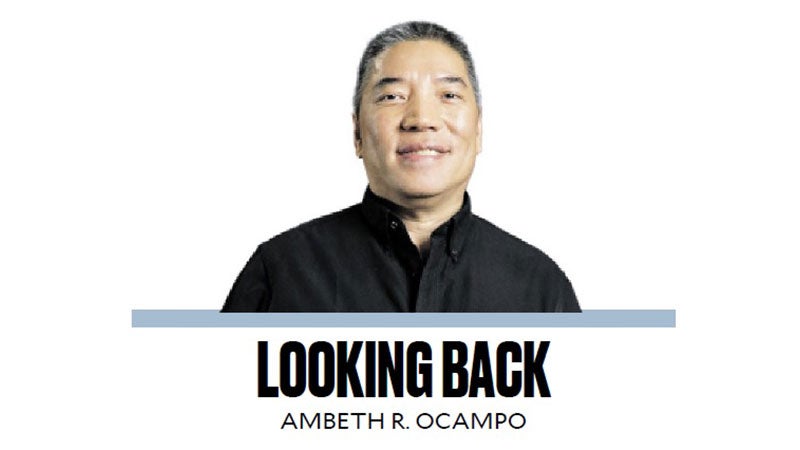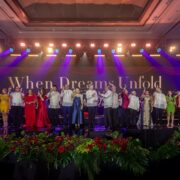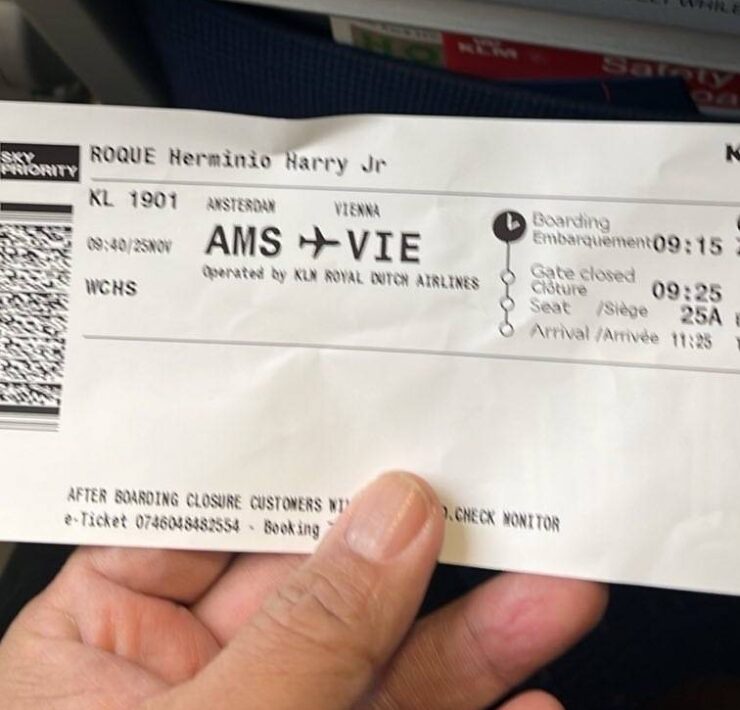Café Adriatico

Tempus fugit. Times flies indeed. Café Adriatico got its name from Macario Adriatico street on Remedios Circle. It turned 45 years old yesterday, a rude reminder that I have crossed over into being a “Tito of Manila.” Mercifully, not yet a “Lolo of Manila.” I first entered Café Adriatico as a college student in 1981 and remember the old world ambience that has always been copied but never duplicated. Unlike the many coffee shops that multiplied like mushrooms since, Café Adriatico’s charm lay in the eccentric mix of art and antiques that filled the space.
The American Eagle that dominates the bar and ground floor of the café must have been a political statement in the past, but today, it is just a piece of old wood, an ornament salvaged from a prewar house. Its swirls of art nouveau—amazing when you realize it was carved from narra rather than softwood—came from a slow food era when people had the time to roast and brew coffee from beans rather than a pod or a sachet of three-in-one instant coffee.
It was Adriatico that reminded us of Jose Rizal’s novels where social class determined what you scooped out of a tureen of tinola. A skinny wing and chicken neck for Padre Damaso. Chicken legs, thighs, breasts, and giblets for the VIP. The friar sized up a guest waiting in the convento before ordering a servant to serve either: ”chocolate eh” (eh for espeso, a cup of thick chocolate for the VIP) or “chocolate ah” (ah for aguado meaning an adulterated or diluted cup of chocolate for the commoner). Despite instant chocolate mix and coffee machines, Adriatico still serves hot chocolate from balls of cocoa, blended with milk using a wooden batirol (that some diners imagined to be a kinky sex toy). The mixture is heated in a heavy brass chocolatera and poured into small, dainty, espresso cups.
When I had my first sip of Chocolate Eh, Adriatico only occupied the ground floor of the present space. You could hear the footsteps of the second floor occupants. On rowdy nights: some running, shouting, and the sound of things crashing on the floor. When things turned quiet, concerned customers requested waiters to call the police, but were told this was part of the ambience. I was not old enough to know Adriatico when it was still an antique store that served store-bought cakes and bottomless brewed coffee to its customers. In its early days, Café Adriatico was described as “an art gallery masquerading as a coffee shop.” There were a few stained round tables of Philippine hardwood from Vigan and two oval ones by the door reserved for couples. Tables and chairs were slightly askew, others wobbly, not one was ergonomic nor comfortable as these were authentic prewar pieces. All chairs had seats of cane, that caused runs on women’s stockings or unwanted marks on the legs of people who came in shorts. All these have since been replaced by dark cushioned “modern antiques.”
Café Adriatico’s walls were filled with original paintings—landscapes, cityscapes, ad interiors—by the Dimasalang Group that included: E. Aguilar Cruz (whose portrait now gazes at departing patron, and whose nickname Abe is the name of an affiliated restaurant), Sofronio Y. Mendoza or “Sym,” Romulo Galicano, and Ibarra dela Rosa. Later, the oils were joined by watercolors of Philippine folk religious imagery or “santos,” early works by Claude Tayag, who is better known today as a chef or the name of a dessert “Claude’s Dream.” Some original santos used to be seen around, most memorable was a polychromed image of St. Michael the Archangel that stood guard by the bar amid imported spirits none of which bore his namesakes Ginebra San Miguel or San Miguel Beer. This image that danced gracefully over a devil’s head I hear presently resides in a Forbes Park antique collection.
Before LED lighting, the soft glow in the café came from small oil lamps or gaseras whose illumination bounced off used Perrier bottles that held fresh flowers. Stoneware plates handmade by Jon and Tessy Pettyjohn were a nice touch until these were replaced by plain white dishes. I ordered Irish coffee or cappuccino then because they were served on tall, earthy Pettyjohn mugs. I counted about a dozen of these handmade mugs that slowly disappeared and were replaced by generic white cups. Menus were ornamented with original drawings and watercolors by E. Aguilar Cruz, now replaced by laminated printed menus. I wish I had pocketed one. They did not have playlists at the time and the music alternated between two cassette tapes Baroque favorites till midnight and Mozart’s “Horn Concertos” till closing time.
Why is it that we speak of Manila in the past tense? Why is it that I write of Café Adriatico in the past tense? My Café Adriatico remains in my memory, what it is today generates new memories for new and younger patrons. I may not live to see Café Adriatico’s centennial but hope people remember the institution that formed Manila’s café culture.
—————-
Comments are welcome at aocampo@ateneo.edu
Ambeth is a Public Historian whose research covers 19th century Philippines: its art, culture, and the people who figure in the birth of the nation. Professor and former Chair, Department of History, Ateneo de Manila University, he writes a widely-read editorial page column for the Philippine Daily Inquirer, and has published over 30 books—the most recent being: Martial Law: Looking Back 15 (Anvil, 2021) and Yaman: History and Heritage in Philippine Money (Bangko Sentral ng Pilipinas, 2021).





















